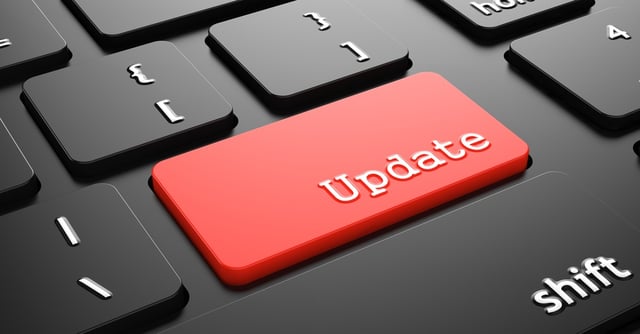End-of-life software’s: does it really affect your business? There are so many reasons why you think your business will be fine without updating the software you use - but, this is not the best mindset. Read this article originally posted by Spiceworks on the dangers of EOL software’s.

The pyramids in Egypt and the Great Wall of China were built to last forever. Computer hardware and software? Not so much. With considerably short lifecycles, most IT departments replace their workstations, servers, and phones regularly when they grow slow over time, stop receiving operating system updates, and/or fall out of warranty.
In other cases, end users may be forced to move on due to liabilities caused by product end-of-life (EOL). Windows XP and Windows Server 2003 are good examples. When Microsoft stopped issuing updates and patches, those OSes effectively became orders of magnitude more vulnerable to security threats. Additionally, software vendors stopped guaranteeing that new applications would be compatible with the old OSes. Still, even after EOL, some individuals and companies find it hard to let go, and they keep using EOL software at their own peril (breaking up is hard to do).
According to a Spiceworks report sponsored by SanDisk in 2015, about 25 percent of organizations did not plan to migrate from Windows Server 2003 until after EOL. Just what are such holdouts really risking?
Why Ignoring EOL Timelines... Is A Bad Idea
Perhaps you’re trying to save a few bucks by using an outdated platform like Windows Server 2003. Or maybe you’re running legacy applications that are past their prime to cut costs. Not to be alarmist: but there really ARE some risks.
End-of-life software dangers:
- Security vulnerabilities: No more security fixes being issued by Microsoft means that Windows Server 2003 and Windows XP are now a minefield of security hazards. For this reason alone, you should update ASAP. A firewall and anti-virus are not sufficient protection against unpatchable vulnerabilities, which hackers are quick to exploit.
- Software incompatibility: New applications are optimized for the most recent OSes. That means when using EOL operating systems, you can’t upgrade to the latest and greatest, so you’ll have to hold onto legacy applications (which are likely also EOL or soon to be).
- Compliance issues: Regulated industries like healthcare and e-commerce deal with lots of sensitive customer data. Entrusting your critical information to a decade-old OS or an unsecure application? STOP. In addition to security lapses, it could result in big fines, company shutdowns, or possible jail time.
- High operating costs: The costs of maintaining and bug-fixing any post-EOL software can be steep. The expense of paying Microsoft to patch an EOL operating system can greatly exceed the price of simply replacing Windows Server 2003. What about the high cost of a mission-critical app failing? These are all things to consider.
- Poor performance and reliability: Chances are, if you’re still running legacy apps or old versions of Windows, then you’ve got some aging servers and workstations hanging around the office too… adding to your risk because these likely out-of-warranty devices are prone to breaking down. Consider that downtime alone could be more costly than an overdue upgrade.
Simply put, there’s no bulletproof way to run EOL software. The potential risks typically outweigh the rewards, even if you’re tight on budget. Security, compatibility, and compliance are all big problems with EOL software. So, what’s the solution?
Taking Network Inventory to Identify EOL Risks
Risky EOL software, and out-of-warranty hardware could be hiding in the dark corners of your server room or in some underutilized VM that you never really touch.
It can be a challenge to discover these at-risk systems, especially if you have hundreds of devices on your network. Need to know what hardware and software you've got? A network inventory can help you.
In summary, end-of-life hardware and software pose a huge risk to IT departments around the world. However, EOL does not have to spell disaster. With an adequate understanding of the risks involved, advanced planning, and help from tools like a network inventory, you can identify and migrate away from end-of-life hardware and software.
This blog was originally posted on Spiceworks
Source: Spiceworks. End-of-life software: What are the dangers? (Article). Retrieved from https://www.spiceworks.com/it-articles/end-of-life-software-dangers/



.png?width=1080&name=GOOGLE%20REVIEW%20(1).png)